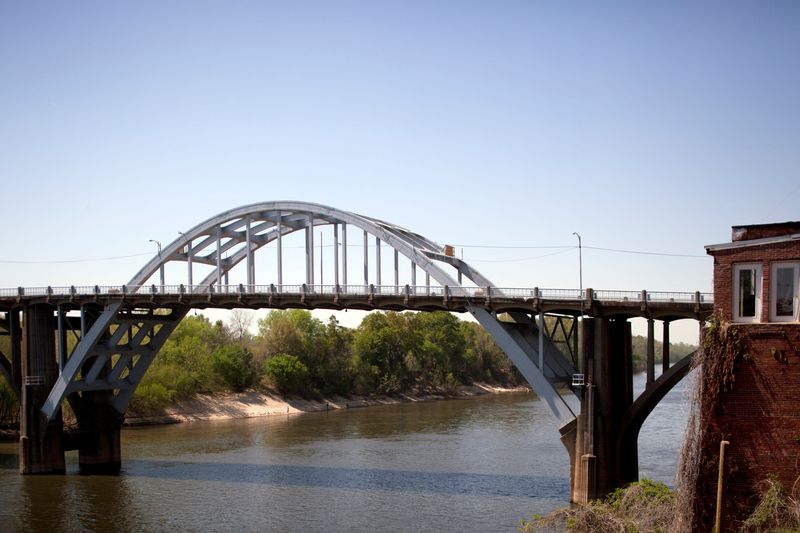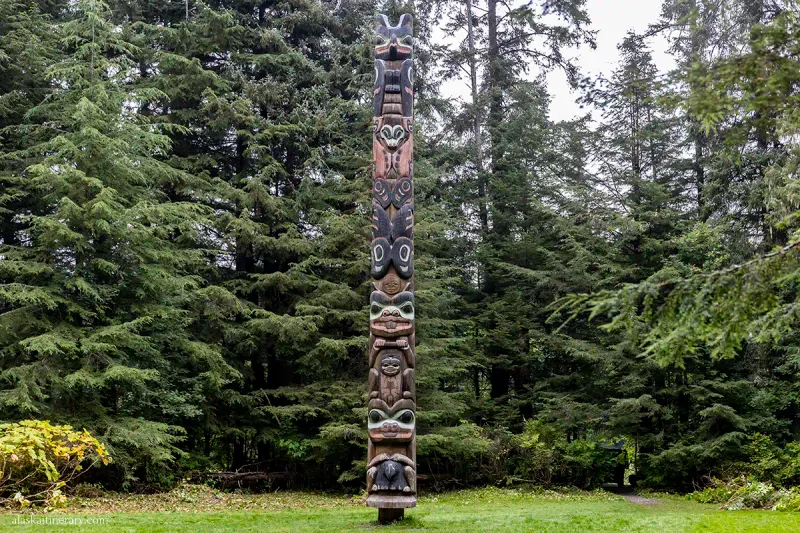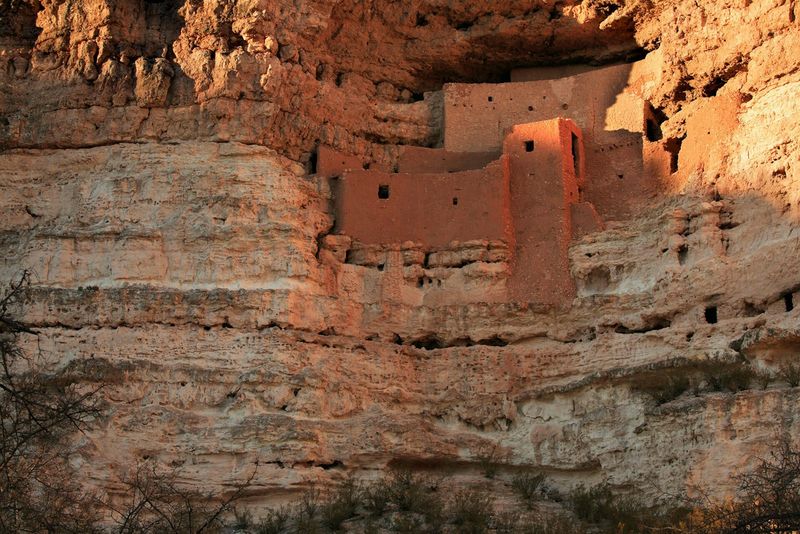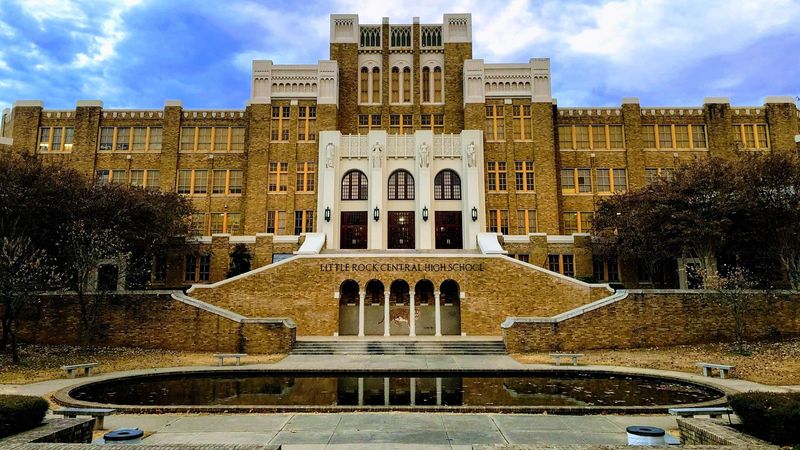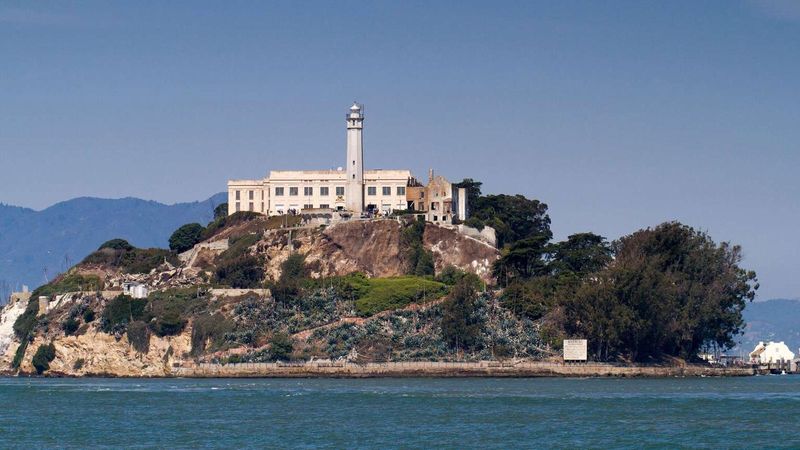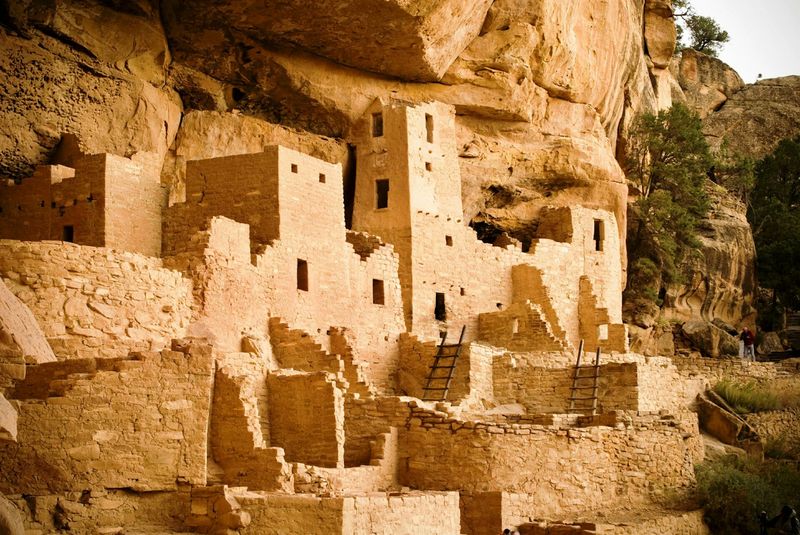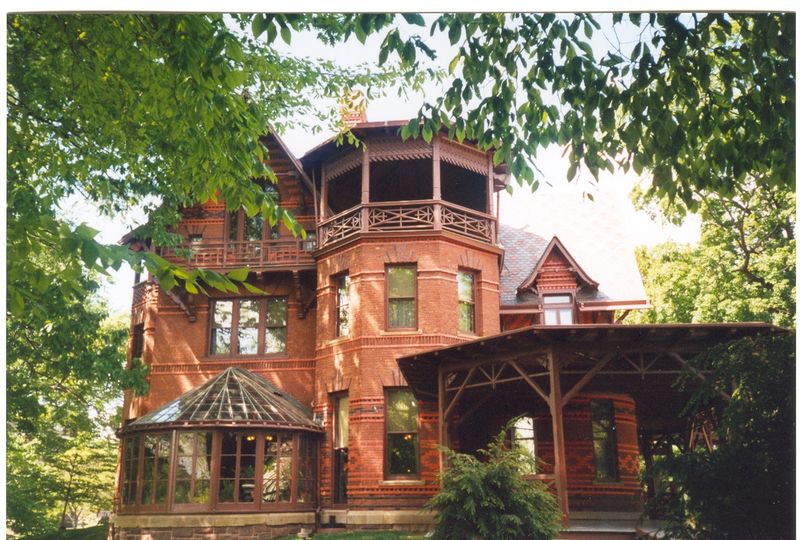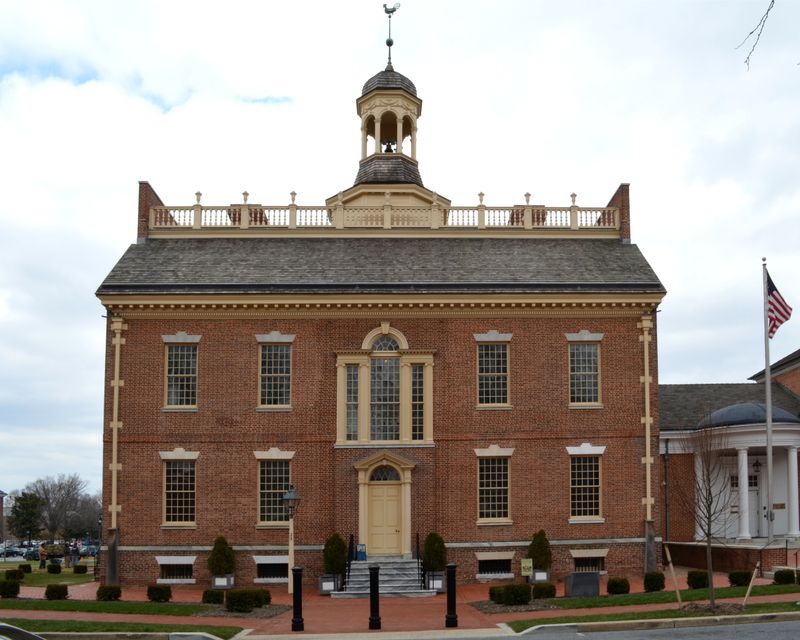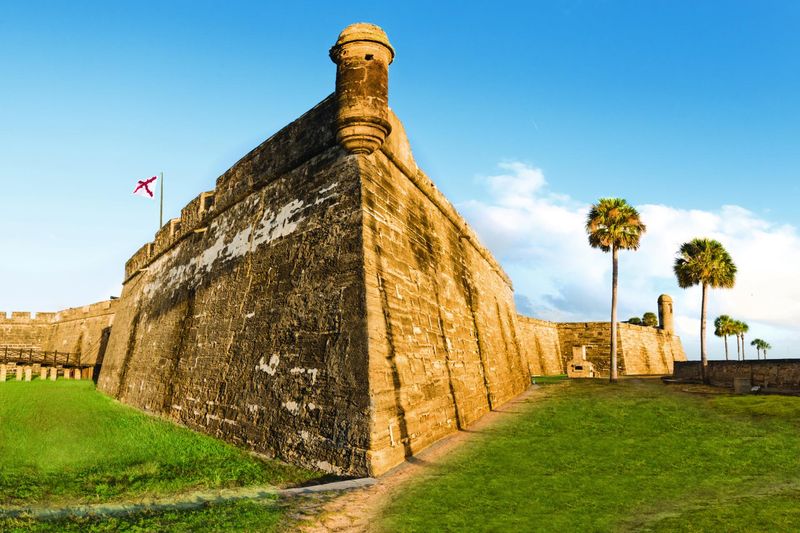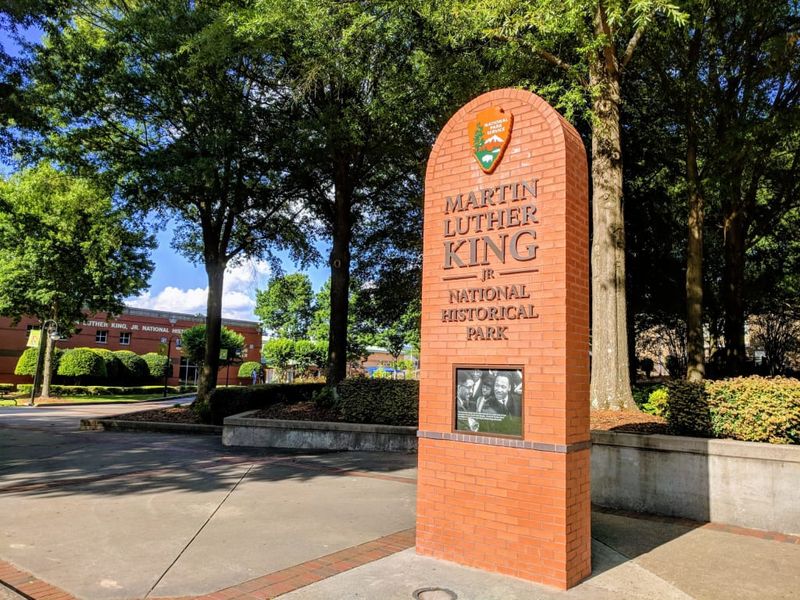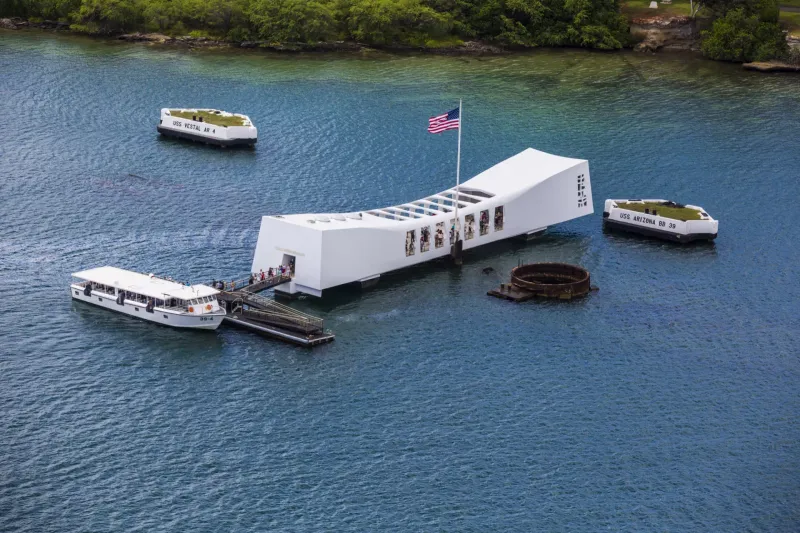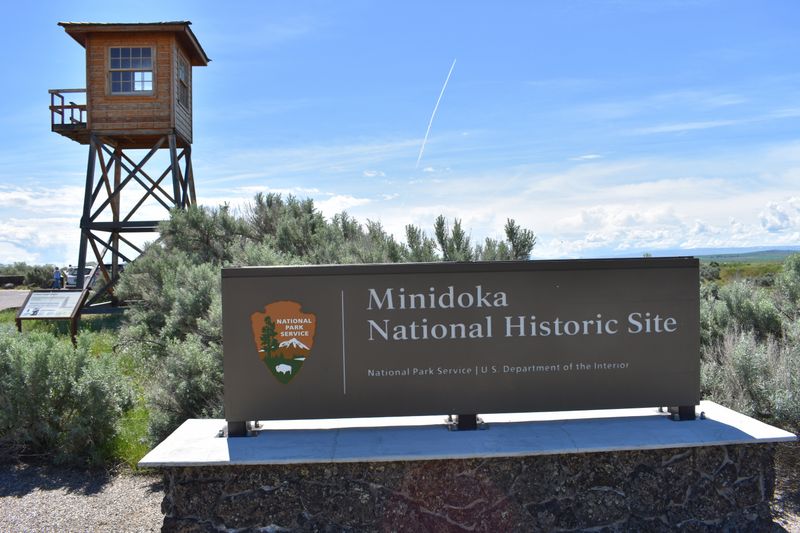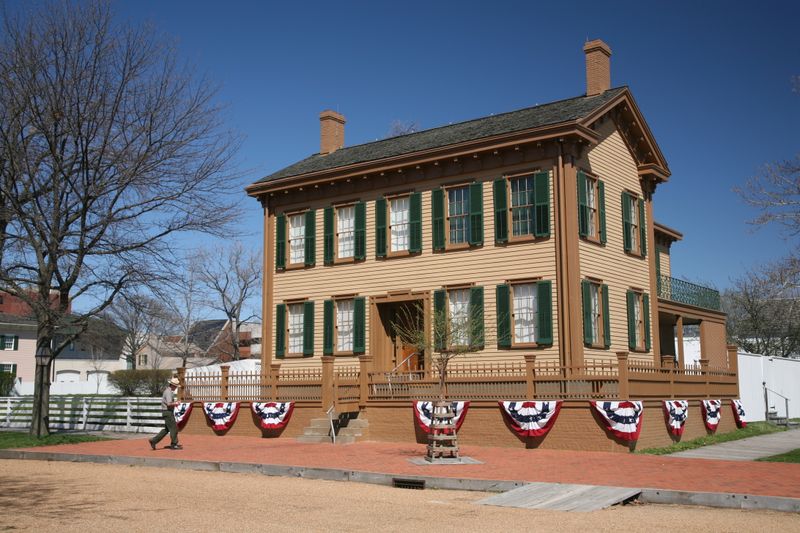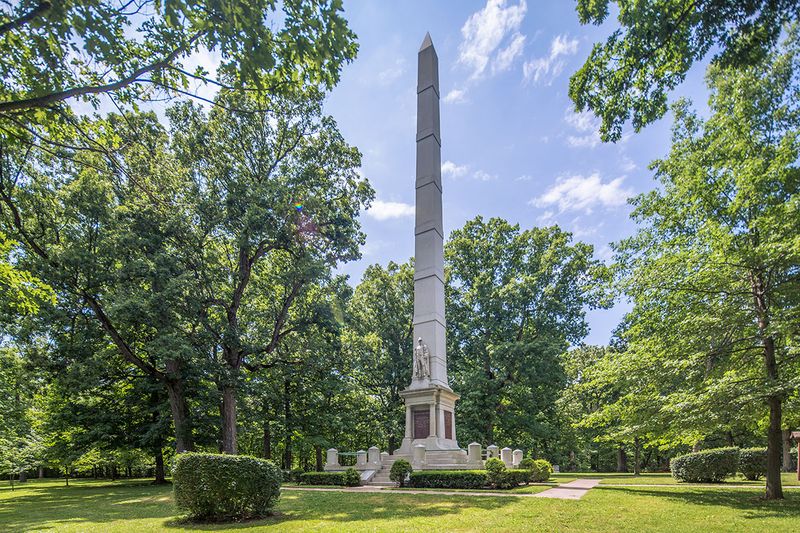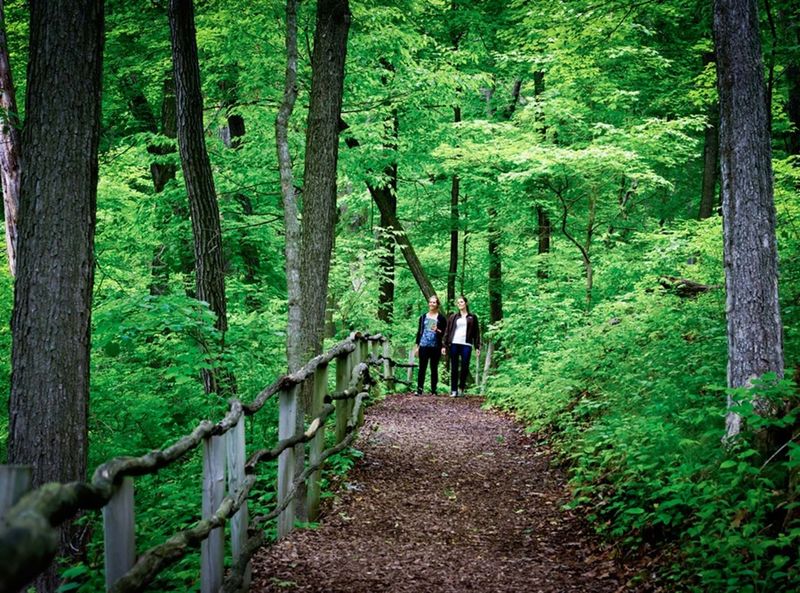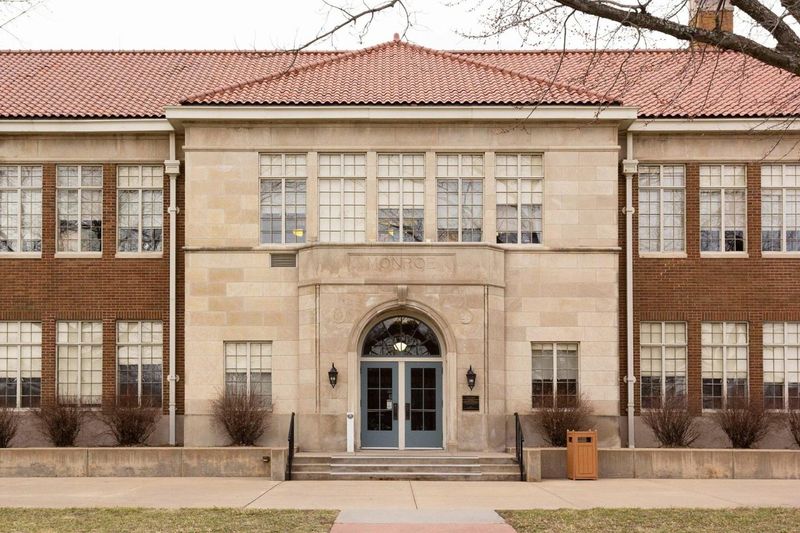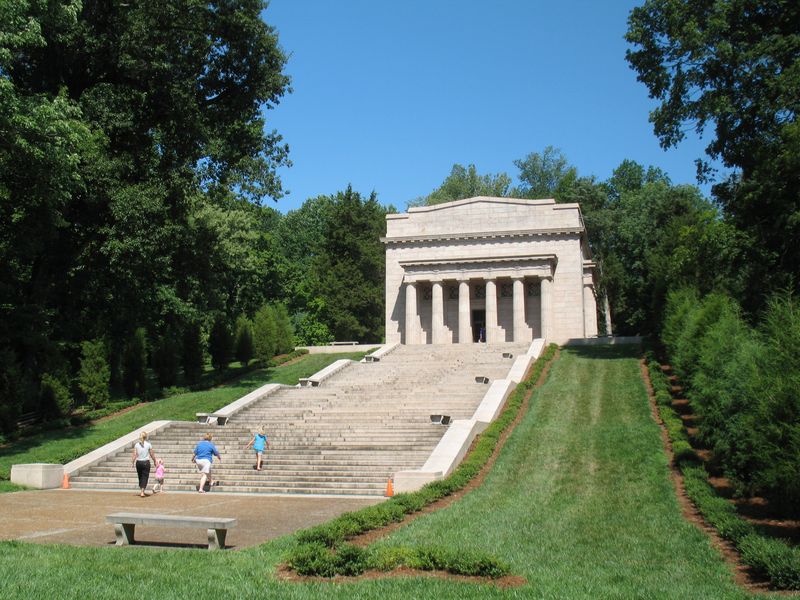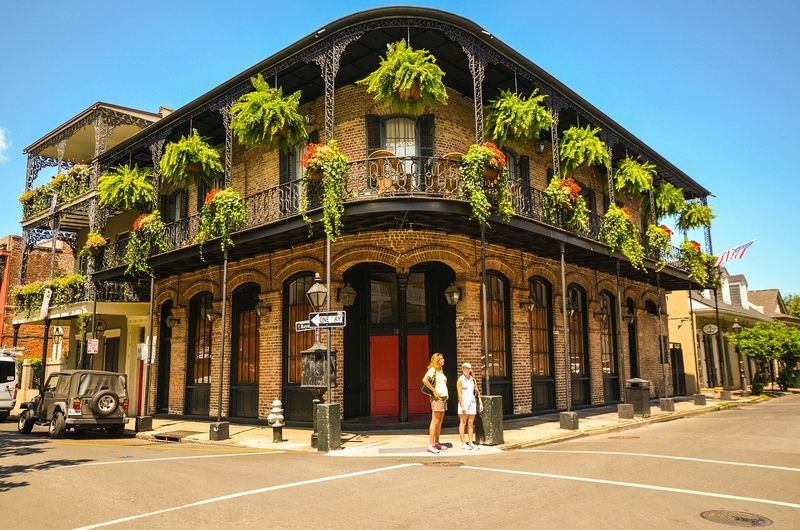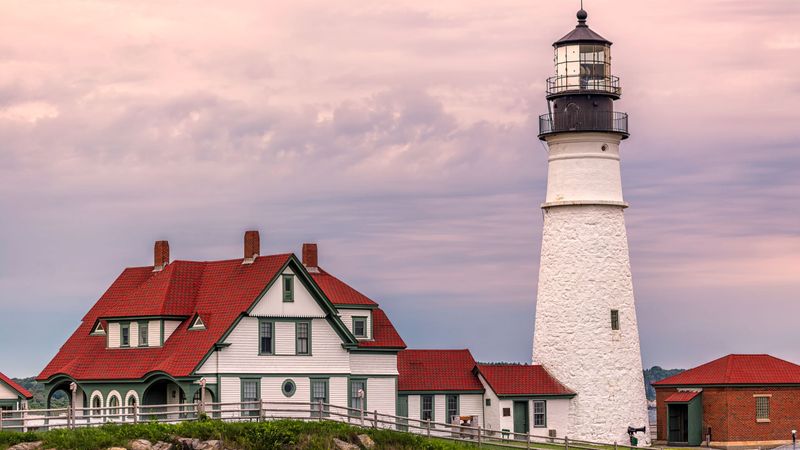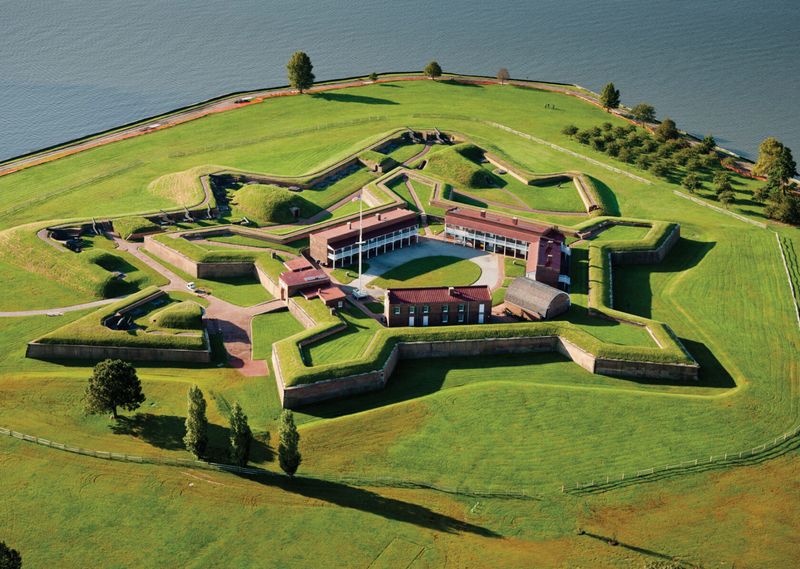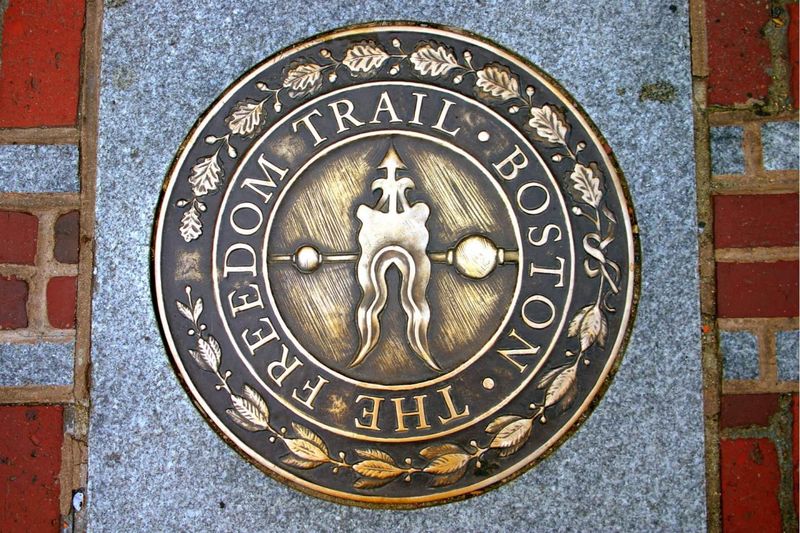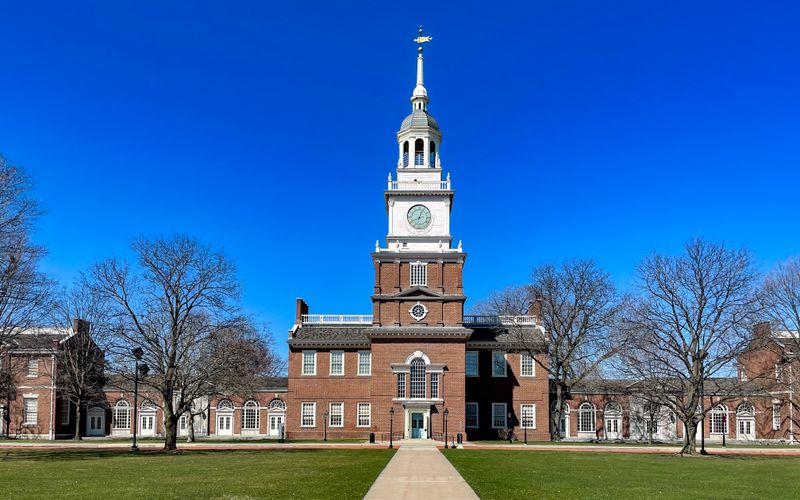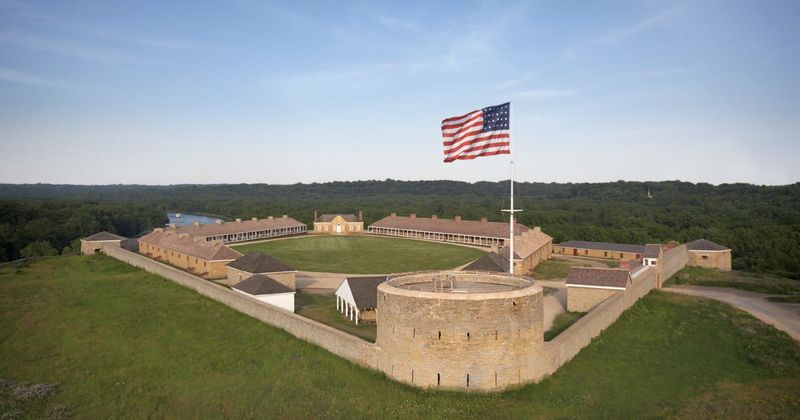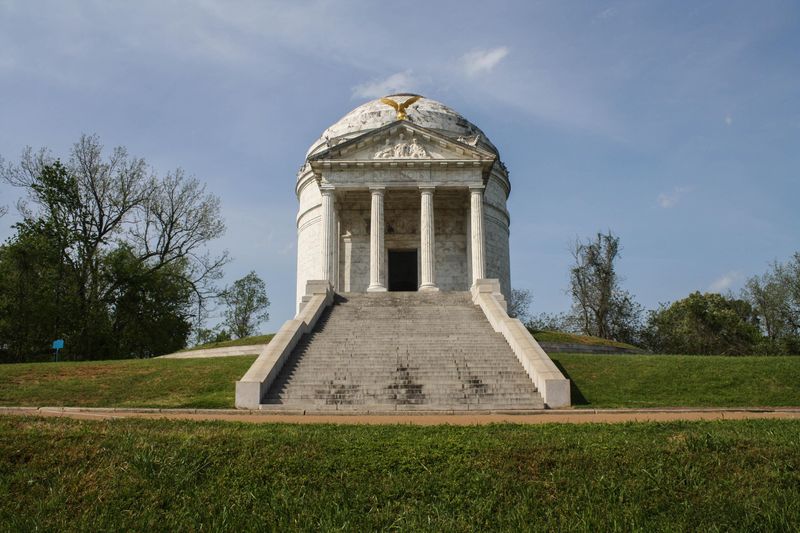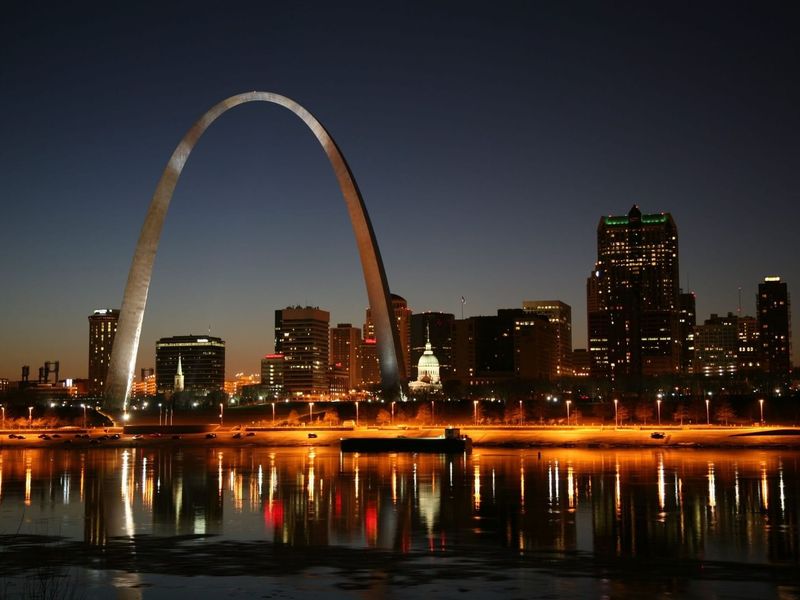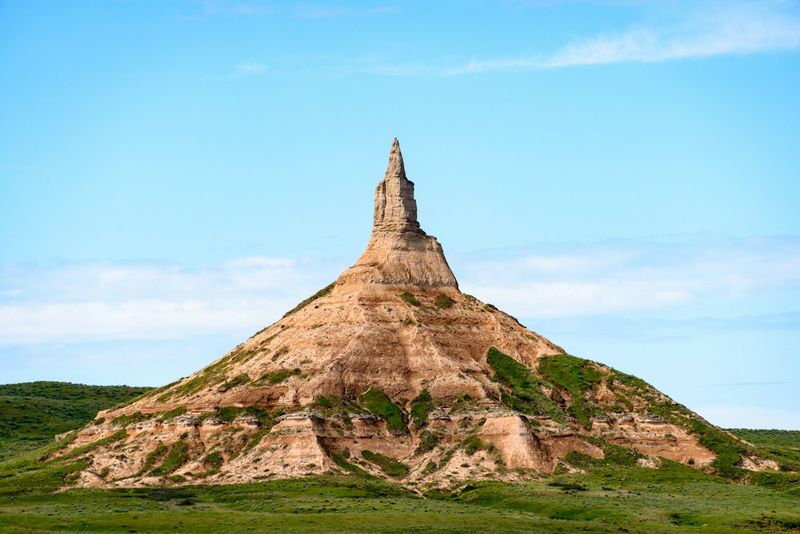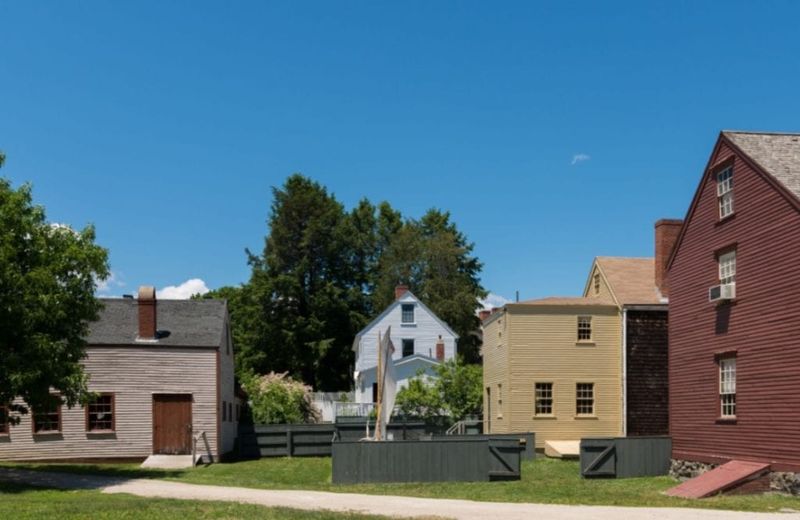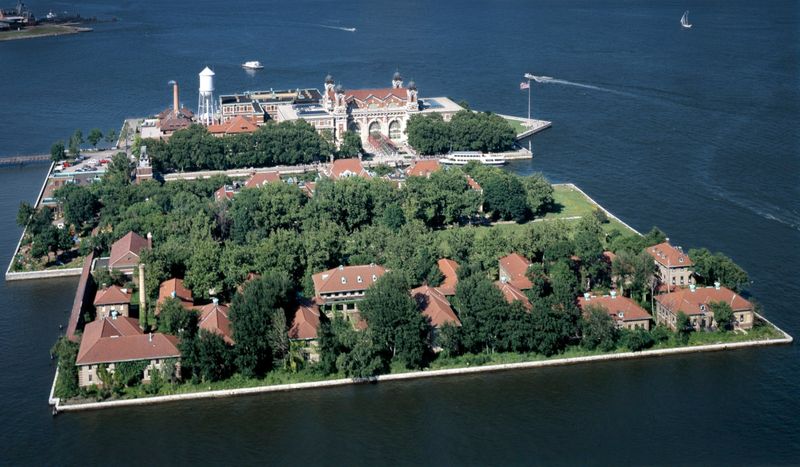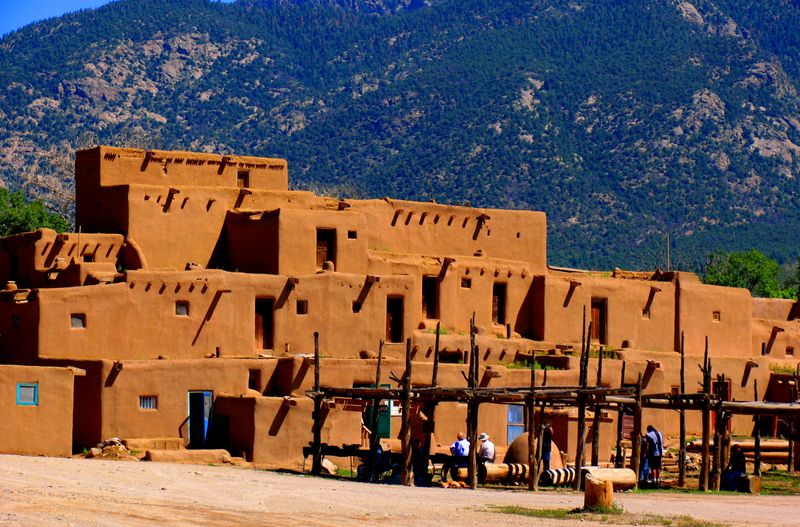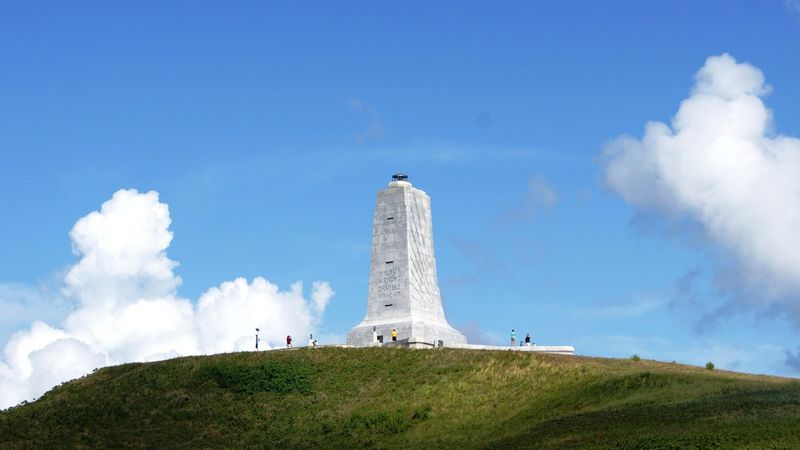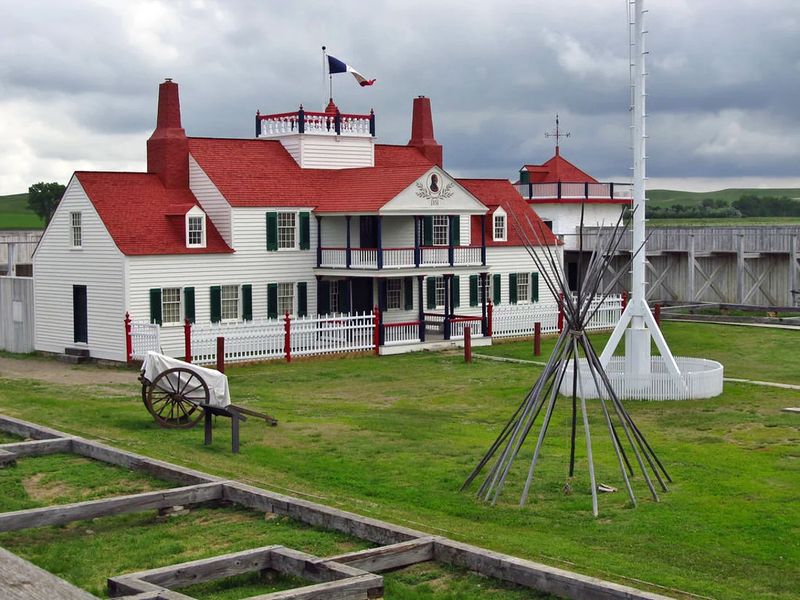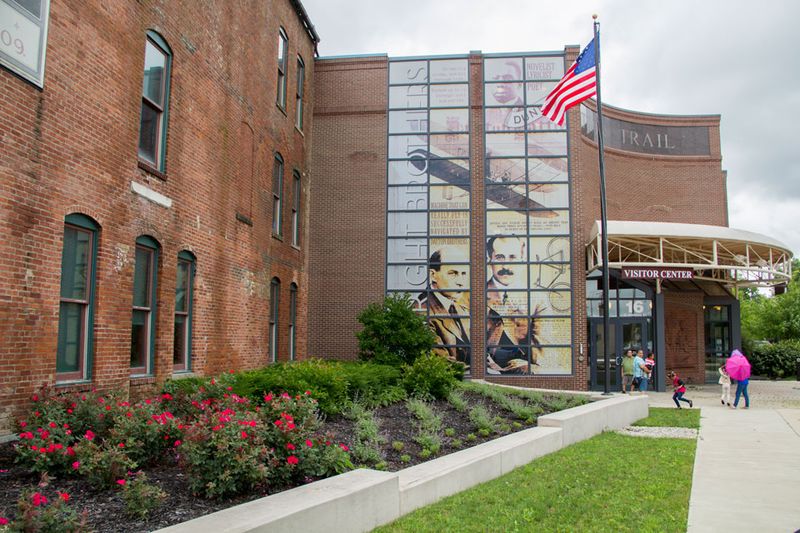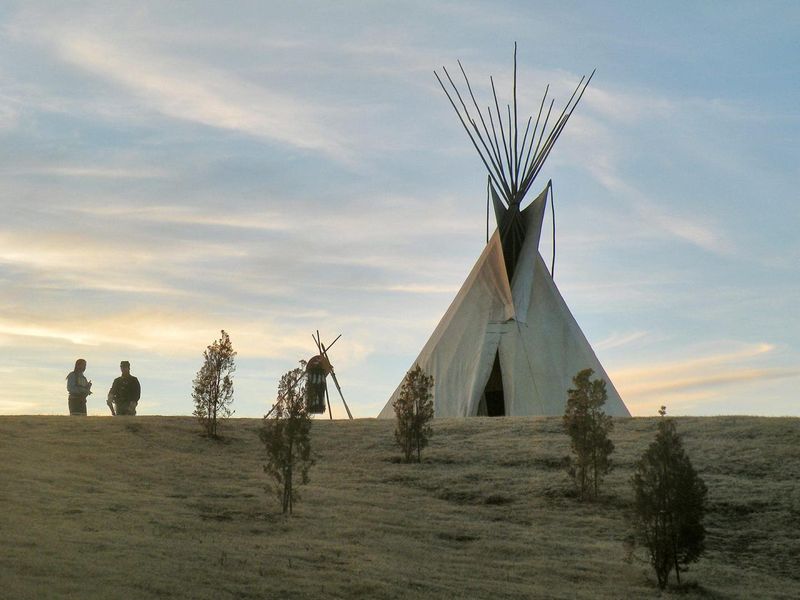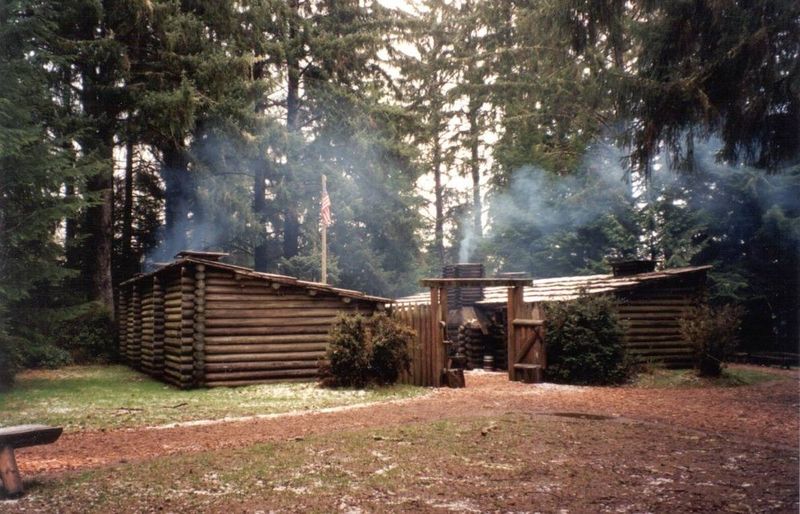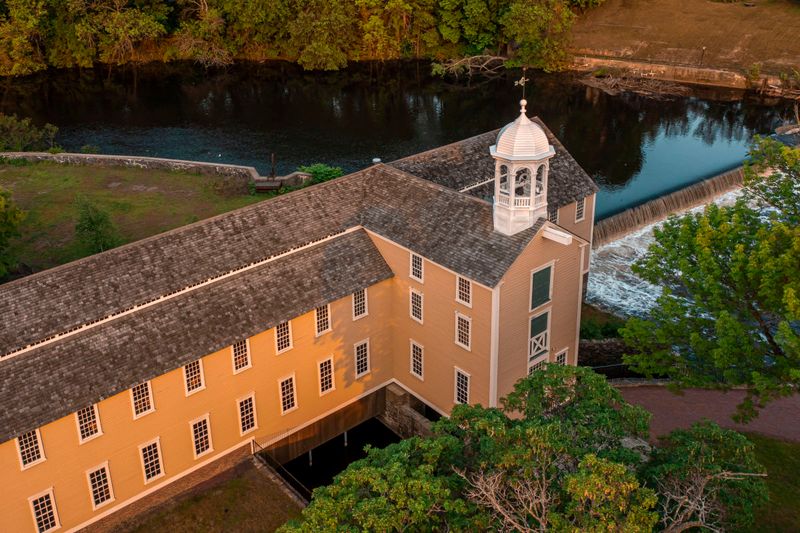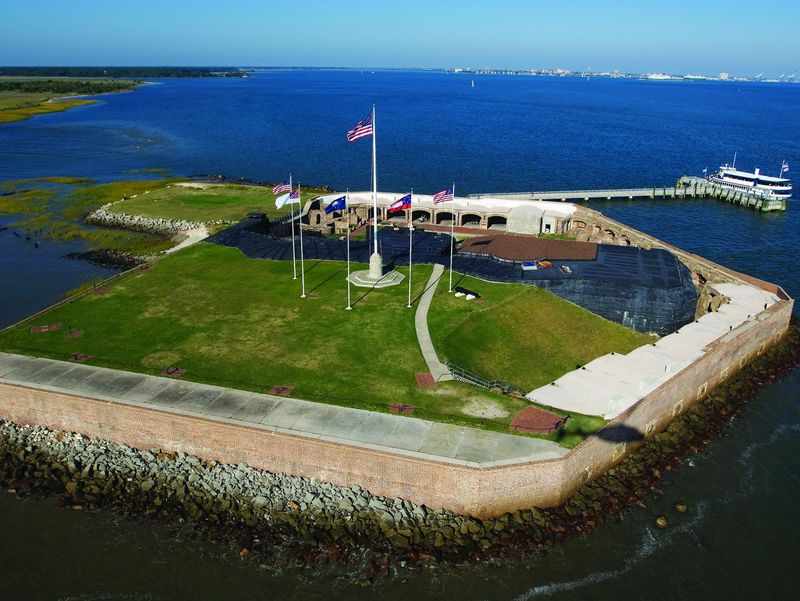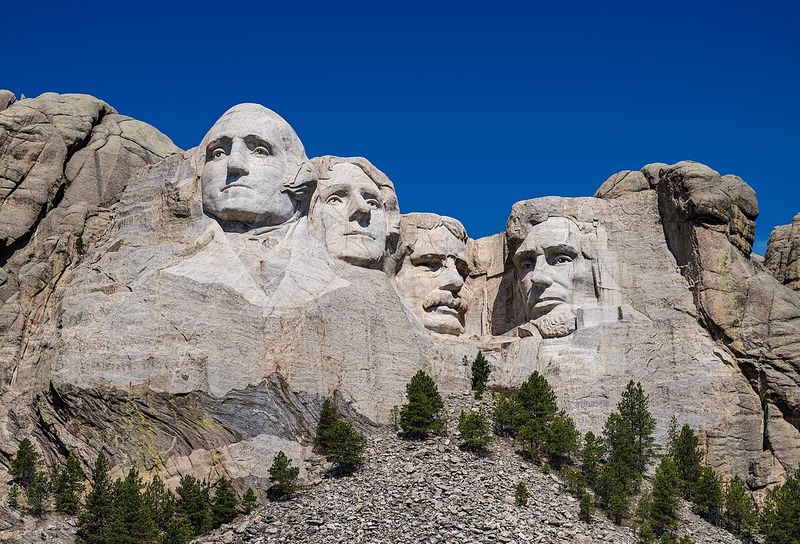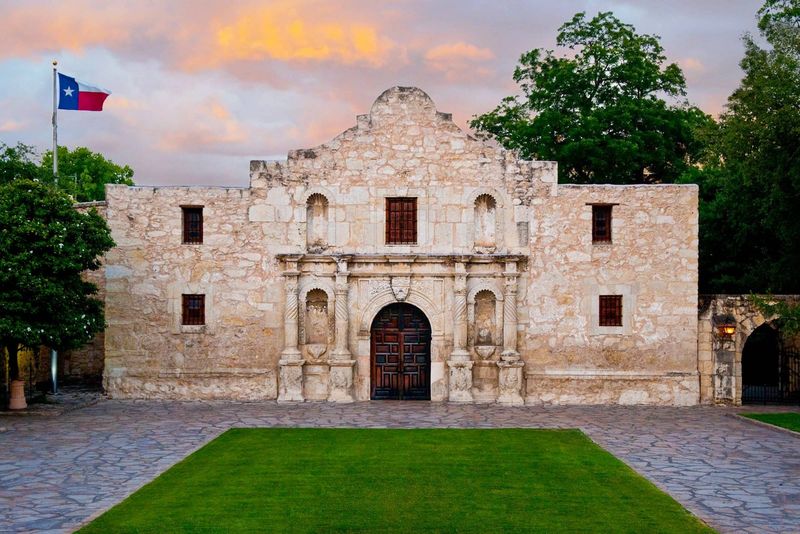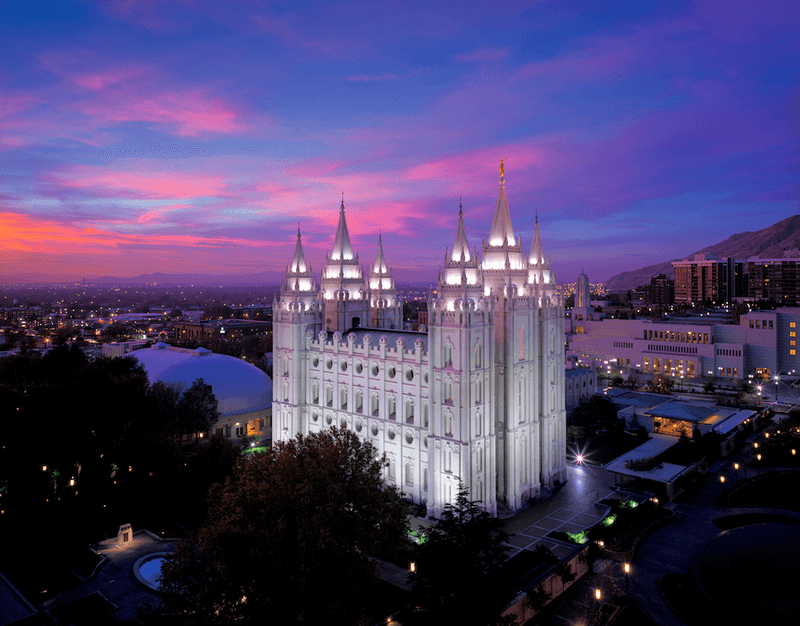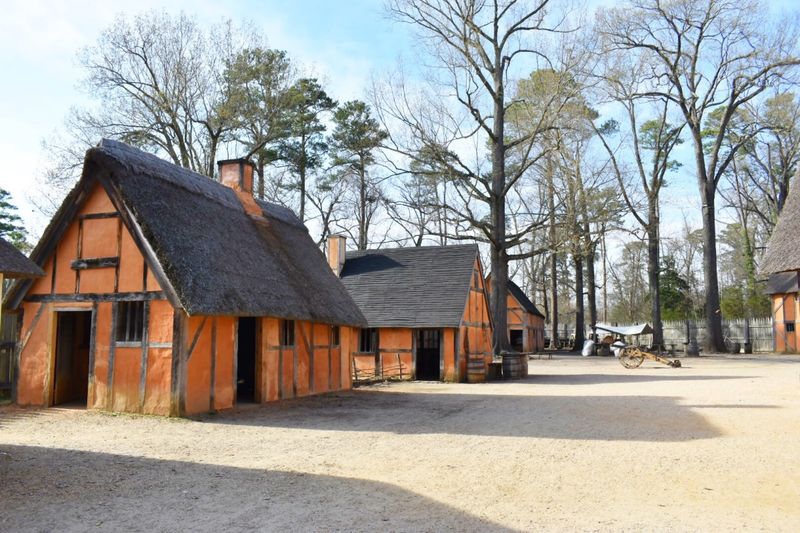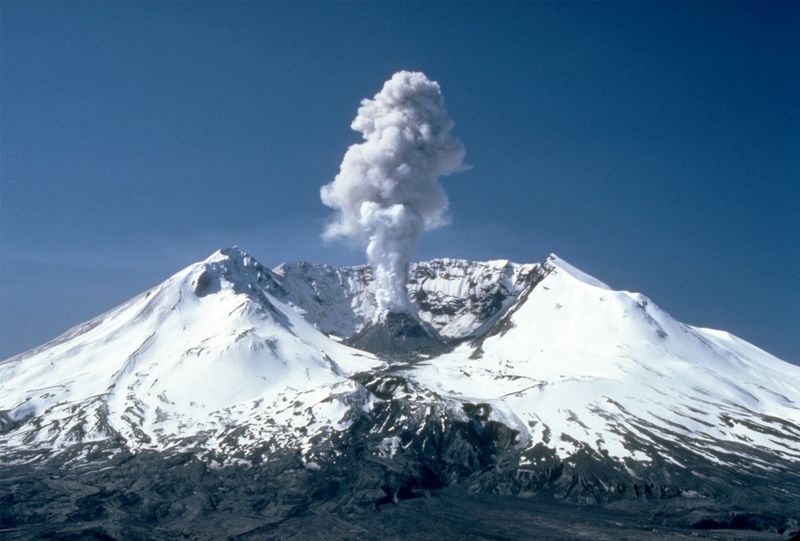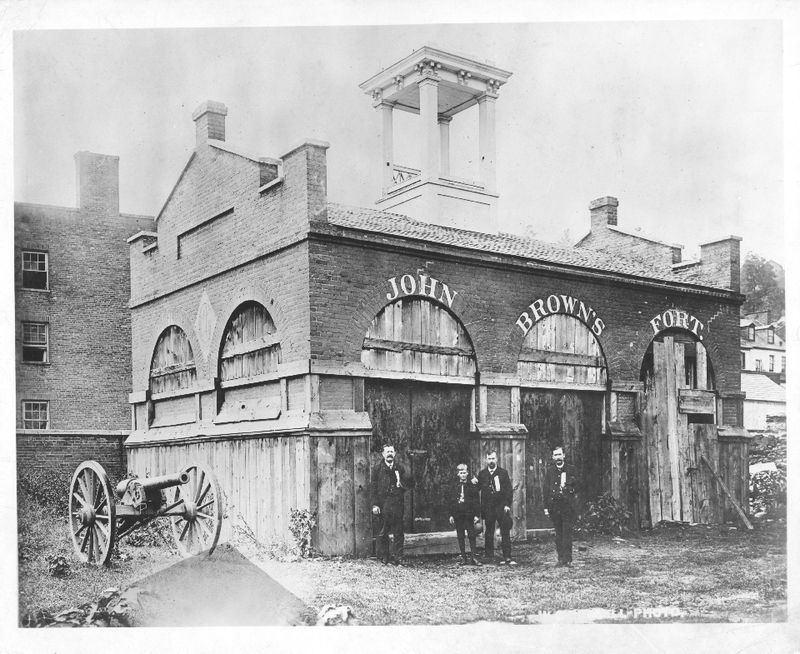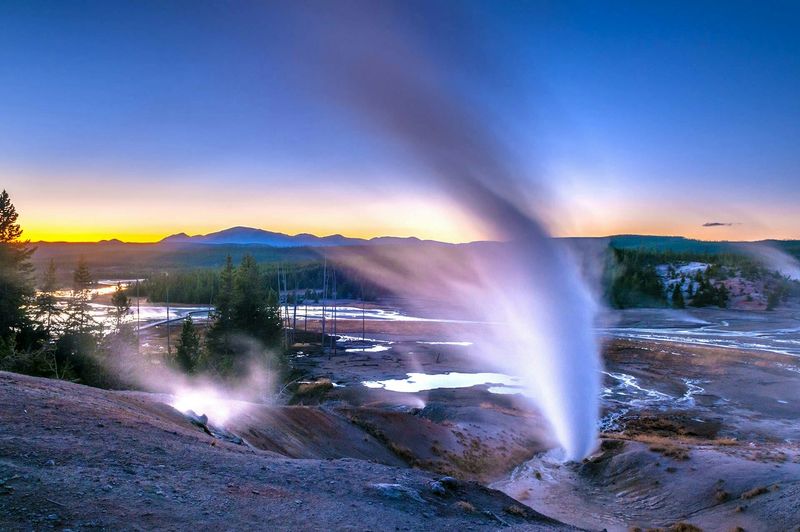From battlegrounds and birthplaces to monuments and missions, these landmarks shaped the nation we know today. Explore the most historically significant site in every state—how many have you seen?
1. Alabama – Edmund Pettus Bridge
In the heart of Alabama stands the Edmund Pettus Bridge, a powerful emblem of the Civil Rights Movement. During the 1965 Selma to Montgomery marches, this bridge became a pivotal site of protest and solidarity. The courage of those who dared to cross in pursuit of equality led to significant changes in American voting laws.
Today, the bridge is not only a reminder of past struggles but a symbol of ongoing advocacy for civil rights. Walking its span, visitors can reflect on the legacy of those who made history here. Its presence encourages a commitment to justice and equality.
2. Alaska – Sitka National Historical Park
Amidst the natural beauty of Alaska, Sitka National Historical Park marks the site of the 1804 Battle of Sitka. This clash between Russian traders and the Tlingit people highlights the region’s complex colonial history. The park preserves the cultural heritage of Native Alaskan tribes through its collection of totem poles and historic artifacts.
Visitors can explore trails that weave through lush forests, offering glimpses into the past. The park’s serene environment contrasts with its storied history, providing a place for reflection and understanding of Alaska’s diverse cultural tapestry. It’s a testament to resilience and cultural preservation.
3. Arizona – Montezuma Castle
Nestled within the rugged cliffs of Arizona lies Montezuma Castle, a 1,000-year-old marvel built by the Sinagua people. This ancient five-story dwelling showcases the ingenuity and resourcefulness of early Native American societies. Perched high above the desert floor, it stands as a testament to survival and adaptation.
Visitors are transported back in time as they marvel at this architectural wonder, imagining the lives of its original inhabitants. The site offers a unique glimpse into the past, fostering appreciation for the rich history and culture of the region’s indigenous peoples. Montezuma Castle remains a symbol of enduring legacy.
4. Arkansas – Little Rock Central High School
Little Rock Central High School, a seemingly ordinary educational institution, became a battleground for social change in 1957. When the Little Rock Nine bravely integrated this school under federal protection, they challenged the status quo and ignited a nationwide movement for equality.
The courage and resilience of these young pioneers resonate through the halls, inspiring future generations. Today, the site stands as a monument to the struggle for civil rights and the pursuit of justice. It reminds visitors of the power of courage in the face of adversity and the ongoing fight for educational equality.
5. California – Alcatraz Island
Off the coast of San Francisco, Alcatraz Island looms with an air of mystery and intrigue. Once a notorious federal prison, it held some of America’s most dangerous criminals, including Al Capone. Its isolated location in the chilly waters of the San Francisco Bay made escape nearly impossible.
Today, Alcatraz is a fascinating historical site, drawing visitors with tales of infamy and justice. The island offers insights into the American penal system and the lives of those who were confined there. Despite its grim past, Alcatraz captivates the imagination, standing as a symbol of isolation and resilience.
6. Colorado – Mesa Verde National Park
In the rugged canyons of Colorado, Mesa Verde National Park preserves the remarkable cliff dwellings of the Ancestral Puebloans. This UNESCO World Heritage Site boasts over 600 cliff dwellings, showcasing the architectural prowess and cultural richness of this ancient civilization.
Visitors can explore the well-preserved ruins, gaining insights into the daily lives of the people who thrived in this challenging environment. The park offers a journey through time, celebrating the ingenuity and resilience of the Ancestral Puebloans. Mesa Verde remains a testament to human adaptability and the enduring legacy of Native American heritage.
7. Connecticut – Mark Twain House
Nestled in Hartford, Connecticut, the Mark Twain House stands as a testament to literary genius. This Victorian Gothic mansion was home to Samuel Clemens, known as Mark Twain, during his most prolific years. Within its walls, Twain penned classics like “The Adventures of Huckleberry Finn.”
The house offers a glimpse into the life of one of America’s most influential writers, with its richly decorated interiors and personal artifacts. Visitors can explore the rooms where Twain crafted stories that continue to resonate. It’s a place where history and literature intertwine, celebrating the wit and wisdom of a literary icon.
8. Delaware – First State Heritage Park
In the heart of Dover, Delaware, First State Heritage Park stands as a tribute to the state’s pivotal role in American history. As the first state to ratify the U.S. Constitution in 1787, Delaware set the stage for a new nation. The park encompasses historic buildings and sites that capture the essence of this momentous period.
Visitors can explore the Legislative Hall, where the state’s ratification took place, and wander through the picturesque surroundings. The park offers a journey into the past, celebrating Delaware’s foundational role in the creation of the United States and its enduring legacy of leadership.
9. Florida – Castillo de San Marcos
In the historic city of St. Augustine, Florida, the Castillo de San Marcos stands as a formidable symbol of Spanish colonial power. Built in the late 1600s, this fortress defended Spanish Florida from foreign invaders and remains the oldest masonry fort in the continental United States.
The formidable coquina walls have withstood countless sieges and battles, preserving the stories of a turbulent past. Today, visitors can explore the fort’s intricate architecture, walk along its battlements, and imagine life during the colonial era. The Castillo embodies the rich history and enduring strength of America’s oldest European settlement.
10. Georgia – Martin Luther King Jr. National Historical Park
In Atlanta, Georgia, the Martin Luther King Jr. National Historical Park offers a profound journey into the life and legacy of a civil rights icon. Spanning multiple sites, the park includes King’s birthplace, church, and final resting place. Each location holds stories of hope, courage, and the relentless pursuit of equality.
Visitors can walk the path of history, reflecting on the values that King championed. His powerful speeches and tireless advocacy continue to inspire change. The park serves as a pilgrimage site, honoring the enduring impact of Martin Luther King Jr. and the quest for social justice.
11. Hawaii – Pearl Harbor National Memorial
On the shores of Oahu, Hawaii, the Pearl Harbor National Memorial commemorates a pivotal moment in World War II. The attack on Pearl Harbor in 1941 shocked the world and propelled the United States into the global conflict. Today, visitors pay their respects at the solemn memorial, honoring those who lost their lives.
The site offers a poignant reminder of the sacrifices made during wartime and the resilience of a nation united in the face of adversity. Pearl Harbor remains a symbol of courage and a call to remember the past while striving for a more peaceful future.
12. Idaho – Minidoka National Historic Site
In the remote plains of Idaho, the Minidoka National Historic Site stands as a somber reminder of civil liberties lost during World War II. Once an internment camp for Japanese Americans, it now serves as a place of reflection and education about this dark chapter in American history.
Visitors can explore the site, learning about the lives of those who were unjustly confined. The stories of resilience and strength in the face of injustice resonate through the landscape. Minidoka encourages dialogue and understanding, reminding us of the importance of protecting civil rights for all.
13. Illinois – Lincoln Home National Historic Site
In Springfield, Illinois, the Lincoln Home National Historic Site offers a glimpse into the life of one of America’s most revered leaders. This modest two-story house was the only home Abraham Lincoln ever owned, serving as his residence before his presidency.
Visitors can explore the well-preserved rooms where Lincoln and his family lived, gaining insights into his early years and the values that shaped his leadership. The site is a testament to Lincoln’s humble beginnings and his enduring legacy as a symbol of freedom and unity. It’s a place of inspiration and reflection for all who visit.
14. Indiana – Tippecanoe Battlefield
In the heartland of Indiana, the Tippecanoe Battlefield marks a pivotal clash in American history. The 1811 battle between U.S. forces and Native American warriors led by Tecumseh’s confederation shaped the future of the American frontier.
Today, the battlefield is a place of remembrance, where visitors can explore the landscapes that witnessed this historic encounter. Monuments and markers tell the stories of courage and conflict, highlighting the complexities of early American expansion. Tippecanoe stands as a reminder of the struggles for land, power, and identity that have shaped the nation’s history.
15. Iowa – Effigy Mounds National Monument
In the scenic bluffs of Iowa, Effigy Mounds National Monument preserves a prehistoric legacy of Native American cultures. The site features numerous mounds shaped like animals, offering insights into the spiritual and cultural practices of the indigenous people who once thrived here.
Visitors can explore the trails that wind through the lush landscape, discovering the significance of these ancient earthworks. The mounds serve as a testament to the creativity and ingenuity of their creators, connecting us to a time long past. Effigy Mounds is a place of wonder and respect for the rich heritage of Native American history.
16. Kansas – Brown v. Board of Education National Historic Site
In Topeka, Kansas, the Brown v. Board of Education National Historic Site stands as a testament to the fight for equality in American education. The former Monroe Elementary School represents the landmark Supreme Court decision that ended legal segregation in public schools.
Visitors can explore the site, learning about the case that challenged and changed the nation’s laws. The stories of those who bravely stood against discrimination resonate through the halls, inspiring continued advocacy for equal rights. The site serves as a reminder of the power of collective action and the ongoing pursuit of justice and equality.
17. Kentucky – Abraham Lincoln Birthplace National Historical Park
In the rolling hills of Kentucky, the Abraham Lincoln Birthplace National Historical Park honors the humble beginnings of America’s 16th president. A simple log cabin marks the site where Lincoln was born, offering a glimpse into his early life.
Visitors can explore the park’s serene landscapes and learn about the influences that shaped Lincoln’s character and leadership. The site serves as a reminder of the enduring legacy of a president who led the nation through its most challenging times. It inspires reflection on the values of perseverance, integrity, and unity that Lincoln embodied.
18. Louisiana – French Quarter, New Orleans
In the heart of New Orleans, the French Quarter pulsates with a rich tapestry of history and culture. Known for its colonial architecture, jazz music, and vibrant nightlife, the French Quarter embodies centuries of change and cultural fusion.
Visitors can wander through its lively streets, savoring the sounds and flavors that define the city’s unique character. The district is a celebration of diversity, where traditions from around the world converge. The French Quarter remains a symbol of resilience and creativity, capturing the spirit of New Orleans and its enduring allure for travelers and locals alike.
19. Maine – Portland Head Light
Perched on the rocky shores of Cape Elizabeth, Maine, the Portland Head Light stands as a beacon of maritime history. Commissioned by George Washington, this iconic lighthouse has guided ships safely since 1791, witnessing centuries of seafaring adventures.
Visitors can explore the lighthouse and its surroundings, taking in the breathtaking views of the Atlantic Ocean. Its enduring presence serves as a symbol of safety and guidance for sailors navigating the treacherous waters. The Portland Head Light remains a cherished landmark, connecting past and present through its storied history and scenic beauty.
20. Maryland – Fort McHenry
In the harbor of Baltimore, Maryland, Fort McHenry stands as a symbol of American resilience and patriotism. During the War of 1812, the fort’s valiant defense against British forces inspired Francis Scott Key to pen “The Star-Spangled Banner.”
Visitors can explore the fort’s historic grounds, imagining the dramatic battle that unfolded here. The sight of the American flag proudly flying overhead serves as a reminder of the nation’s enduring spirit. Fort McHenry is a place of reflection and celebration, honoring the sacrifices made in defense of freedom and the birth of a national anthem.
21. Massachusetts – Boston Freedom Trail
In the heart of Boston, the Freedom Trail weaves a path through the city’s rich revolutionary history. Linking over a dozen historic sites, from Paul Revere’s house to the Old North Church, the trail offers a journey through the events that shaped the nation.
Visitors can follow the red-brick path, uncovering stories of courage and defiance at every turn. Each landmark along the trail adds to the narrative of America’s fight for independence. The Boston Freedom Trail is a living testament to the spirit of rebellion and the quest for liberty that defined a generation.
22. Michigan – Henry Ford Museum
In Dearborn, Michigan, the Henry Ford Museum is more than a tribute to automobiles; it’s a celebration of American innovation and ingenuity. From the assembly line to civil rights, the museum tells the story of technological and social advancements that have shaped the nation.
Visitors can explore vast exhibits that showcase everything from historic vehicles to groundbreaking inventions. The museum offers a window into the past, highlighting the creativity and determination that drove progress. The Henry Ford Museum remains a testament to the spirit of innovation and the power of ideas to transform society.
23. Minnesota – Fort Snelling
In the heart of Minnesota, Fort Snelling stands as a symbol of the state’s military and cultural history. Established in the early 19th century, the fort played a key role in the U.S.–Dakota War of 1862 and the broader Native American struggle.
Visitors can explore the well-preserved buildings and learn about the complex interactions between military forces and indigenous peoples. The fort’s strategic location at the confluence of the Mississippi and Minnesota Rivers underscores its historical significance. Fort Snelling serves as a place of reflection on the challenges and resilience of the people who shaped the region.
24. Mississippi – Vicksburg National Military Park
In the rolling hills of Mississippi, Vicksburg National Military Park preserves the site of a key Union victory during the Civil War. The siege of Vicksburg in 1863 was a turning point that split the Confederacy in two, altering the course of the war.
Visitors can explore the battlefield, dotted with cannons and monuments, and learn about the strategies and sacrifices that defined the conflict. The park offers a profound connection to the past, honoring the bravery of those who fought for their beliefs. Vicksburg stands as a testament to the resilience and determination that shaped a nation.
25. Missouri – Gateway Arch
Rising majestically above the St. Louis skyline, the Gateway Arch is a symbol of America’s westward expansion and ambition. Completed in 1965, this architectural marvel celebrates the spirit of exploration and the pioneers who ventured into the unknown.
Visitors can journey to the top of the arch for breathtaking views of the city and the Mississippi River. The Gateway Arch stands as a tribute to the courage and determination that defined a young nation. It inspires a sense of wonder and possibility, embodying the bold spirit of those who sought a new frontier.
26. Montana – Little Bighorn Battlefield
In the rolling plains of Montana, the Little Bighorn Battlefield marks the site of a dramatic clash between U.S. forces and Native American warriors. Known as Custer’s Last Stand, this 1876 battle was a decisive victory for the Lakota, Cheyenne, and Arapaho tribes.
Visitors can explore the expansive landscape, imagining the tension and bravery of those who fought here. Monuments and markers tell the story of the conflict, highlighting the cultural and historical significance of the battle. Little Bighorn stands as a testament to the enduring struggle for land, identity, and sovereignty in the American West.
27. Nebraska – Chimney Rock
In the open prairies of Nebraska, Chimney Rock rises as a natural beacon for travelers and pioneers. This iconic rock formation served as a landmark for thousands of settlers journeying westward on the Oregon Trail.
Visitors can stand in awe of its towering presence, imagining the hope and determination of those who passed by on their quest for a new life. Chimney Rock embodies the spirit of exploration and adventure that defined the westward expansion. It remains a symbol of the journey and the dreams that shaped the American frontier.
28. Nevada – Hoover Dam
On the Nevada-Arizona border, the Hoover Dam stands as a monumental achievement of engineering and human perseverance. Completed during the Great Depression, this colossal structure harnessed the power of the Colorado River, providing electricity and water for the western United States.
Visitors can marvel at the dam’s impressive architecture and learn about its construction and impact on the region. The Hoover Dam symbolizes the ingenuity and determination that defined an era of American progress. It remains a testament to the ability to overcome adversity and shape the future through innovation and collaboration.
29. New Hampshire – Strawbery Banke Museum
In the charming town of Portsmouth, New Hampshire, the Strawbery Banke Museum preserves a neighborhood rich in history and tradition. As one of the country’s oldest settlements, this living history museum offers a glimpse into life from Colonial times through the 20th century.
Visitors can wander through historic homes and gardens, engaging with costumed interpreters who bring the past to life. The museum celebrates the diverse cultures and communities that have shaped the region. Strawbery Banke is a place of discovery, connecting visitors to the stories and experiences that define American heritage.
30. New Jersey – Ellis Island
In the waters of New York Harbor, Ellis Island stands as a gateway to the American dream for millions of immigrants. Between 1892 and 1954, this historic processing center welcomed newcomers seeking new opportunities and a better life.
Visitors can explore the restored buildings and exhibits, tracing the journeys of those who passed through its halls. The island offers a poignant reminder of the challenges and hopes that defined the immigrant experience. Ellis Island remains a symbol of opportunity and diversity, celebrating the contributions of immigrants to the fabric of American society.
31. New Mexico – Taos Pueblo
In the high desert of New Mexico, Taos Pueblo stands as a living testament to Native American heritage and resilience. Continuously inhabited for over 1,000 years, this adobe village offers a glimpse into the traditions and culture of the Taos people.
Visitors can explore the multi-storied buildings and engage with the community, gaining insights into their way of life. Taos Pueblo embodies the spirit of continuity and connection to the land, celebrating a rich cultural legacy. It remains a vibrant and enduring symbol of identity and tradition, inviting all to learn and appreciate its history.
32. New York – Statue of Liberty
In the iconic New York Harbor, the Statue of Liberty stands as a beacon of hope and freedom for the world. Gifted by France in 1886, Lady Liberty has greeted generations of immigrants, symbolizing the promise of a new beginning.
Visitors can journey to Liberty Island and gaze upon the statue’s majestic presence, reflecting on its enduring message of liberty and opportunity. The Statue of Liberty embodies the ideals of democracy and human rights, inspiring all who behold her. She remains a timeless symbol of the American dream and the enduring values that unite us.
33. North Carolina – Wright Brothers National Memorial
On the windswept shores of Kitty Hawk, North Carolina, the Wright Brothers National Memorial marks the birthplace of powered flight. In 1903, Orville and Wilbur Wright achieved the first successful airplane flight, changing the course of history.
Visitors can explore the monument and nearby historic sites, gaining insights into the ingenuity and determination of the Wright brothers. The memorial celebrates the spirit of innovation and the pursuit of dreams that transcends time. It stands as a testament to the power of human ingenuity and the endless possibilities of flight.
34. North Dakota – Fort Union Trading Post
In the vast landscapes of North Dakota, Fort Union Trading Post stands as a reminder of the region’s vibrant trade and cultural exchange. As a hub for the fur trade, the fort served as a meeting place for Native American tribes and European settlers.
Visitors can explore the reconstructed buildings and learn about the diverse interactions that shaped the region’s history. The trading post highlights the complexities of cultural exchange and cooperation. Fort Union remains a symbol of the interconnectedness of different peoples and the shared history that continues to influence the present.
35. Ohio – Dayton Aviation Heritage National Historical Park
In Dayton, Ohio, the Dayton Aviation Heritage National Historical Park celebrates the pioneering spirit of the Wright brothers and the birth of powered flight. This historic site encompasses several locations that highlight the achievements of Orville and Wilbur Wright.
Visitors can explore exhibits and artifacts that tell the story of aviation’s beginnings and the innovation that propelled it forward. The park serves as a tribute to the vision and determination of the Wright brothers, inspiring future generations to reach for the skies. It stands as a testament to the power of imagination and creativity.
36. Oklahoma – Washita Battlefield
In the rolling plains of Oklahoma, the Washita Battlefield marks a somber chapter in American history. In 1868, a U.S. military attack on a Southern Cheyenne village highlighted the harsh realities of westward expansion and conflict.
Visitors can explore the landscape and memorials, reflecting on the impact of the battle and the broader struggle for land and identity. The site serves as a place of remembrance and learning, honoring the resilience of the Cheyenne people. Washita Battlefield is a reminder of the complexities of history and the enduring quest for justice and reconciliation.
37. Oregon – Fort Clatsop
Tucked away on the Oregon Coast, Fort Clatsop stands as a testament to the Lewis and Clark Expedition’s enduring legacy. During the winter of 1805-1806, the explorers built this fort as their westernmost encampment.
Visitors can explore the reconstructed fort and learn about the challenges and triumphs of the expedition. The site offers a glimpse into the determination and perseverance of the explorers who expanded the nation’s horizons. Fort Clatsop remains a symbol of discovery and adventure, celebrating the spirit of exploration that continues to inspire.
38. Pennsylvania – Independence Hall
In the heart of Philadelphia, Independence Hall stands as a symbol of American democracy and freedom. Within its walls, the Declaration of Independence and the U.S. Constitution were debated and signed, marking the birthplace of a nation.
Visitors can explore the historic chambers and imagine the debates and decisions that shaped the course of history. Independence Hall is a place of reflection and celebration, honoring the visionaries who laid the foundation for a new government. It remains a testament to the enduring principles of liberty and justice that continue to guide the nation.
39. Rhode Island – Slater Mill
In Pawtucket, Rhode Island, Slater Mill stands as a symbol of the American Industrial Revolution’s beginnings. As the first successful cotton-spinning factory in the United States, it sparked a wave of industrialization that transformed the nation’s economy and society.
Visitors can explore the restored mill and learn about the innovations and challenges of early industrialization. The site offers a glimpse into the lives of the workers and entrepreneurs who fueled this period of change. Slater Mill remains a testament to the power of innovation and the impact of industry on American history and culture.
40. South Carolina – Fort Sumter
In the waters of Charleston Harbor, South Carolina, Fort Sumter stands as a symbol of the nation’s most divisive conflict. In 1861, the first shots of the Civil War were fired here, signaling the start of a brutal and transformative war.
Visitors can explore the fort’s historic grounds and learn about the events leading up to the conflict. The site serves as a place of reflection on the issues of division and unity that continue to shape the nation. Fort Sumter remains a poignant reminder of the cost of war and the enduring quest for reconciliation and peace.
41. South Dakota – Mount Rushmore
In the rugged Black Hills of South Dakota, Mount Rushmore stands as a monumental tribute to four iconic American presidents. Carved into the granite face of the mountain, the likenesses of Washington, Jefferson, Lincoln, and Roosevelt represent the nation’s ideals and history.
Visitors can marvel at the artistry and engineering that created this massive sculpture, reflecting on the leadership and vision of these presidents. Mount Rushmore remains a symbol of national pride and a place of inspiration for all who visit. It invites reflection on the values and aspirations that continue to define the American experience.
42. Tennessee – Graceland
In Memphis, Tennessee, Graceland stands as a testament to the legacy of Elvis Presley, the King of Rock ‘n’ Roll. More than just a mansion, it reflects the rise of popular music and Southern pop culture that captivated the world.
Visitors can explore the rooms filled with memorabilia and artifacts, experiencing the life of a global icon. Graceland is a place of nostalgia and celebration, honoring the creativity and charisma that defined an era. It remains a pilgrimage site for music lovers and fans, celebrating the enduring influence of Elvis and the power of music to transcend boundaries.
43. Texas – The Alamo
In the heart of San Antonio, Texas, the Alamo stands as a symbol of resistance and sacrifice. During the 1836 battle for Texas independence, this mission became a rallying cry for those fighting for freedom.
Visitors can explore the historic grounds and learn about the courage and determination of the defenders who made their stand here. The Alamo serves as a place of remembrance and pride, honoring the legacy of those who fought for their beliefs. It remains a symbol of resilience and the enduring spirit of those who seek liberty and justice.
44. Utah – Temple Square
In the heart of Salt Lake City, Utah, Temple Square stands as the spiritual center of the Church of Jesus Christ of Latter-day Saints. This grand complex includes the iconic Salt Lake Temple, a symbol of faith and community for millions.
Visitors can explore the beautifully landscaped gardens and historic buildings, learning about the beliefs and traditions of the Mormon faith. Temple Square is a place of peace and inspiration, welcoming all who seek understanding and connection. It remains a testament to the enduring power of faith and the importance of spiritual heritage in shaping communities.
45. Vermont – Calvin Coolidge Homestead
In the quiet village of Plymouth Notch, Vermont, the Calvin Coolidge Homestead preserves the birthplace of the 30th president of the United States. This rustic setting offers a glimpse into the early life and values of a leader known for his integrity and dedication.
Visitors can explore the homestead and surrounding village, experiencing the simplicity and charm of rural America. The site serves as a tribute to Coolidge’s legacy and the principles of honesty and service that defined his presidency. It remains a place of reflection and inspiration, celebrating the enduring impact of leadership and humility.
46. Virginia – Jamestown Settlement
In the marshlands of Virginia, the Jamestown Settlement marks the site of America’s first permanent English colony. Established in 1607, this settlement laid the foundations for the nation’s development.
Visitors can explore the recreated village and interact with costumed interpreters, gaining insights into the challenges and achievements of the early settlers. The site celebrates the spirit of exploration and survival that defined this pivotal period in history. Jamestown remains a symbol of beginnings and resilience, offering a window into the past and the enduring legacy of America’s colonial roots.
47. Washington – Mount St. Helens National Volcanic Monument
In the state of Washington, Mount St. Helens National Volcanic Monument stands as a testament to nature’s power and the planet’s dynamic processes. The 1980 eruption reshaped the landscape and modern understanding of volcanology.
Visitors can explore the volcanic landscape and learn about the science and stories surrounding the eruption. The monument offers a window into the resilience of nature and the ongoing recovery of the ecosystem. Mount St. Helens remains a symbol of transformation and renewal, inspiring awe and respect for the natural world.
48. West Virginia – Harpers Ferry
In the picturesque setting of West Virginia, Harpers Ferry stands as a flashpoint in the fight against slavery. In 1859, John Brown’s raid electrified the abolitionist movement and set the stage for the Civil War.
Visitors can explore the town’s historic sites and learn about the events that unfolded here. Harpers Ferry is a place of reflection and learning, honoring the courage of those who fought for freedom and justice. It remains a symbol of resistance and the enduring quest for equality, capturing the complexities and passions of a transformative era.
49. Wisconsin – Taliesin
In the rolling hills of Wisconsin, Taliesin stands as a testament to the genius of Frank Lloyd Wright. This sprawling estate served as his home and studio, showcasing his pioneering approach to organic architecture.
Visitors can explore the beautifully designed buildings and landscapes, gaining insights into Wright’s innovative vision. Taliesin is a place of inspiration and creativity, honoring the legacy of a master architect. It remains a symbol of American artistry and the enduring impact of design in shaping our world.
50. Wyoming – Yellowstone National Park
In the vast wilderness of Wyoming, Yellowstone National Park stands as the world’s first national park and a testament to the preservation of natural wonders. Established in 1872, the park is home to breathtaking geysers, hot springs, and diverse wildlife.
Visitors can explore its stunning landscapes, experiencing the beauty and power of nature up close. Yellowstone embodies the spirit of conservation and the importance of protecting our planet’s treasures for future generations. It remains a symbol of the commitment to preserve the natural world and the wonders that make it unique.

